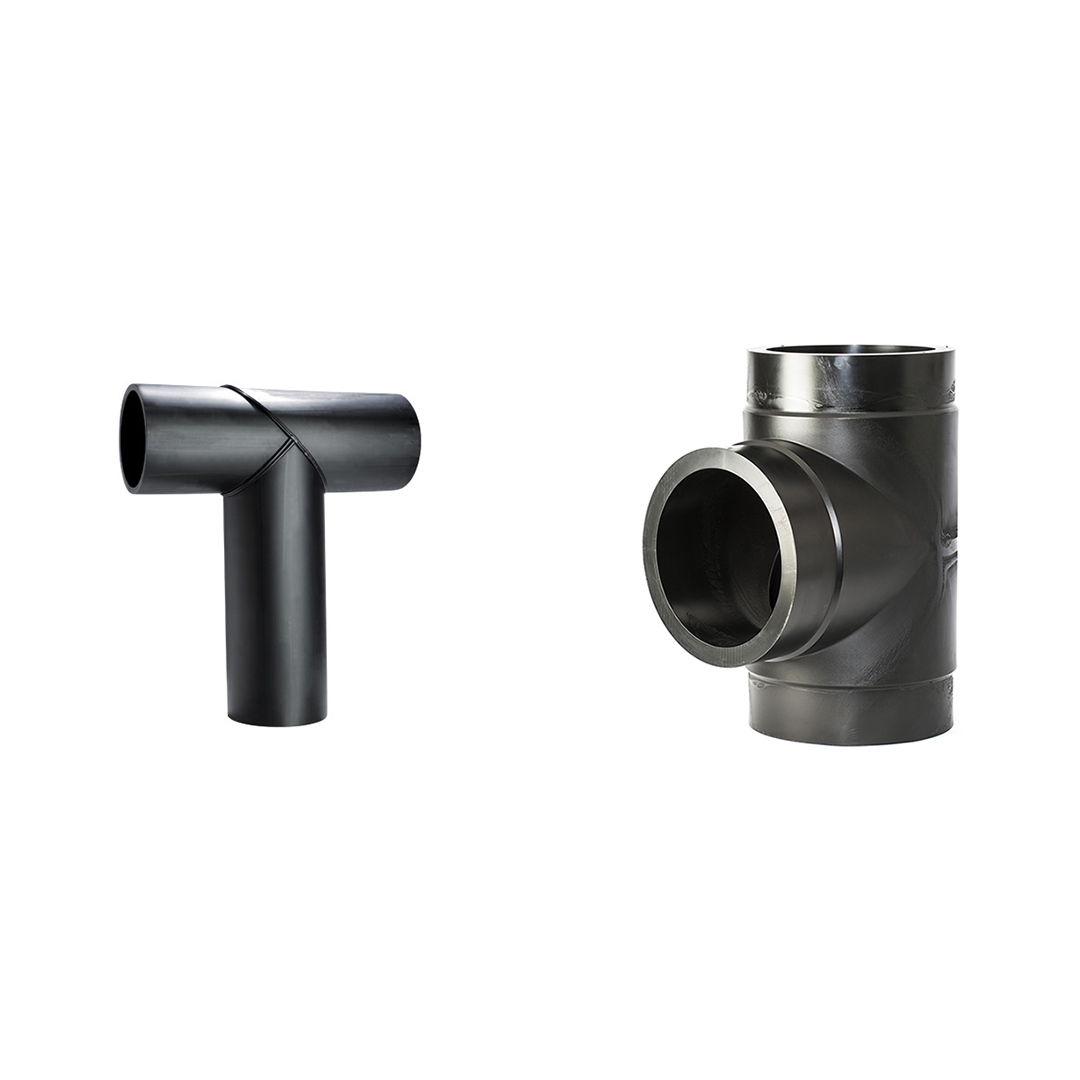Fabricated or moulded: which fitting is best?

When joining HDPE pipe, deciding whether a fabricated or moulded fitting is best for your purpose depends on a variety of factors.
In this blog, we outline the considerations for each type of fitting.
Fabricated fittings
The main consideration for fabricated fittings — such as a segmented elbow, equal tee, junction, or cross — is that they should undergo a process of deration in order to meet Australian standards.
Deration will be considered by an engineer in the design phase of a project.
The guidelines for deration have been developed by PIPA, an Australian, industry-recognised best practice panel, who understand HDPE materials, strengths and limitations.
The guidelines state that segmented elbows with a single welded angle between 15 degrees and 30 degrees needs to be derated by 20 per cent. Any single welded angle above 30 degrees is derated by 50 per cent.
Segment welded or crosscut butt-welded equal tees, junctions and cross welded fittings require 50 per cent deration.
Moulded fittings
Unlike fabricated fittings, moulded fittings do not need to undergo a process of deration.
This is because moulded fittings are consistent in quality and wall thickness, and have integral reinforcing that allows for the stresses that fittings are subjected to.
Reputable brands manufacture to the German DV Standard, which states how to mould tees and elbows.
In addition, good manufacturers of moulded fittings batch test at elevated temperatures and pressure, so that pressure conformance is not a problem.
Which fitting is best?
When it comes to poly pipe fittings, Advanced Piping Systems suggests using quality European moulded fittings over fabricated fittings.
“This is because they are fully pressure-rated, they’re a standard product, they provide the best value for money and they give longevity,” explains Nathan Craig, Director at Advanced Piping Systems.
“For a low-pressure system that’s using a pipe that’s pressure rated a lot higher than necessary, fabricated fittings might be adequate.
“But generally, APS always recommends using moulded fittings.”
Advanced Piping Systems sources all its moulded fittings from Europe because of their high quality, and because they are covered by a manufacturer’s warranty.
This is in comparison to cheaper, low-quality Chinese moulded fittings that have limited batch testing and warranty conditions.
“The moulded fittings we have seen fail have been from China, and we’ve learnt this from very disappointed project managers searching for quality replacement fittings,” said Nathan.
To explore Advanced Piping System’s full range of moulded and fabricated fittings, view our Product page, or contact us today.

